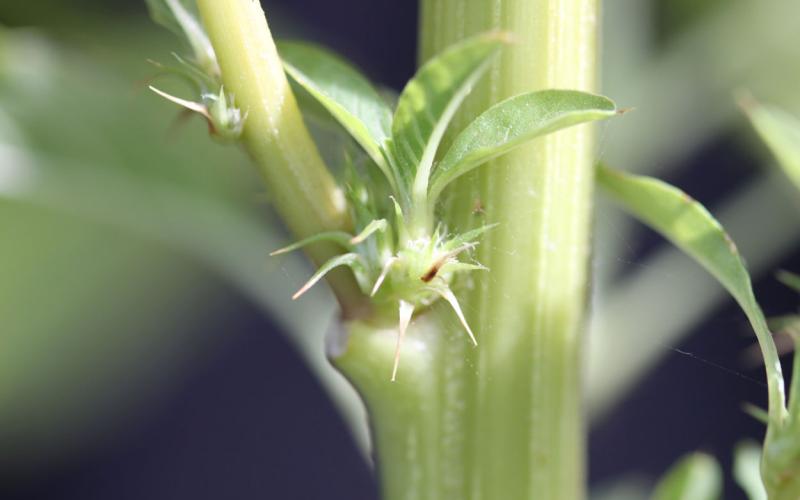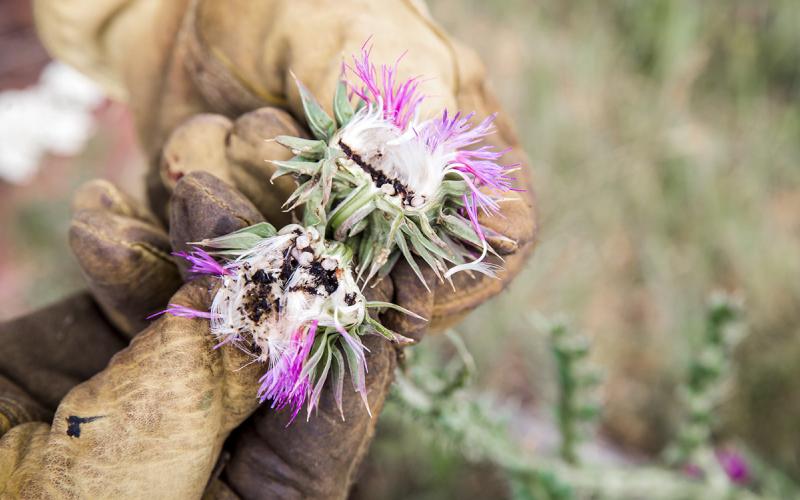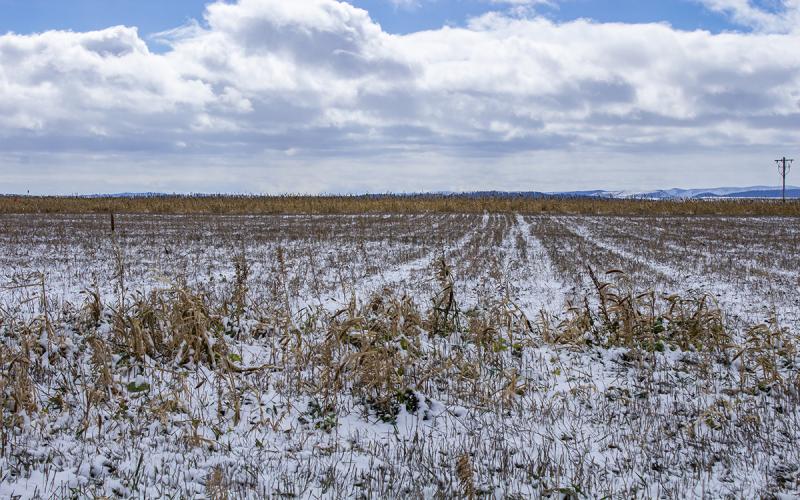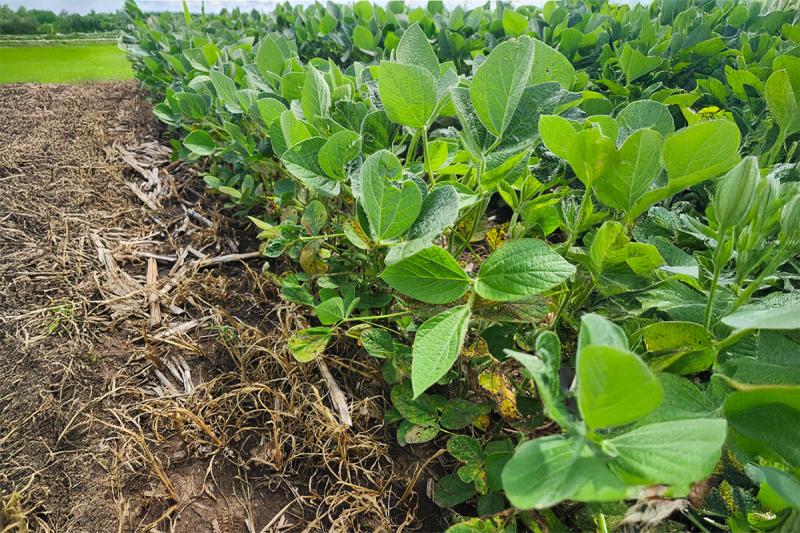
Written collaboratively by Eric Jones, Graig Reicks, Philip Rozeboom, Jill Alms, and David Vos.
Prior to the introduction of Roundup Ready (glyphosate-tolerant) soybean, farmers were accustomed to soybeans exhibiting short-lived injury from herbicide applications. The old saying was “spray your beans and take a two-week vacation”, meaning that the soybeans would grow out of the “burnt” injury from the herbicides. The herbicides that caused this injury are know as the PPO-inhibiting herbicides (Group 14) or casually called “The burners” and would cause speckling from where the spray droplet landed causing a burnt look (Figure 1).
Farmers now are applying these herbicides more frequently to manage glyphosate (Roundup)-resistant kochia and waterhemp. Many of these farmers still do not like the look of injured or setback soybeans despite the effectiveness of the application. While the injury is unsightly, a plethora of research has been conducted to determine if the short-lived injury results in a yield loss. Many studies report injury ranging from mild to severe but yield loss is rarely attributed to the herbicides causing the injury (Arsenijevic et al. 2025; Belfry et al. 2016; Priess et al. 2020) While the soybean plants look unsightly from the application of a PPO-inhibiting herbicide, a more unsightly view is a soybean field full of weeds (Figure 2).
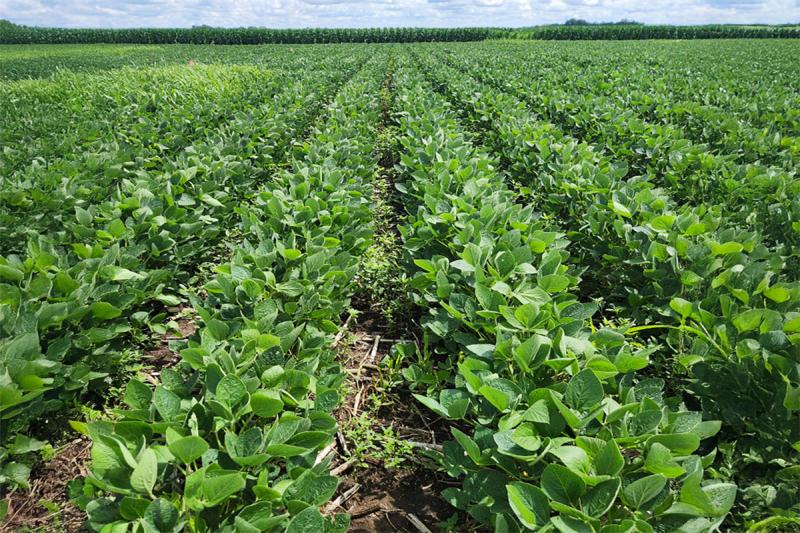
While the PPO-inhibiting herbicides can be effective to manage weeds, how these herbicides are applied and at what time dictates the level of effectiveness.
Weed Size
The PPO-inhibiting herbicides are contact herbicides and do not translocate through the weed. Therefore, coverage is critical for these herbicides to be effective. Weeds should be treated at less than 4” in height utilizing fine droplet spray nozzles and relative high spray output. Twenty gallons per acre is ideal and 15 gallons per acre is the lowest recommended output for these herbicides. The addition of a surfactant (crop oil or nonionic) is necessary as well.
Herbicide Selection
While most herbicides belong to the family of “diphenylether”, the various active ingredients can also influence effectiveness.
Fomesafen (Flexstar) is effective on kochia and waterhemp, but weeds should be sprayed earlier in the season and at a smaller size (2” height). Fomesafen has a carryover potential to corn that is grown in the subsequent season and the rotation restriction is 10 to 18 months depending on the location in South Dakota. In addition, the soil types across South Dakota limit the use rate of fomesafen to 12 fl oz per acre compared to the standard rate of 16 fl oz per acre; hence, the need to spray weeds at a smaller size. Fomesafen is also relatively weak on common lambsquarters and grass weeds and will require a tank mix partner to manage these weed species.
Acifluorfen (Ultra Blazer, Avalanche Ultra) and lactofen (Cobra) are effective on kochia and waterhemp but can be sprayed later in the season due to higher application rates and less carryoverpotential. These herbicides are also weak on lambsquarters and grass weeds as well. The injury potential is usually higher with these two herbicides due to the application rate and extended application window.
Consult the most-recent South Dakota Soybean Pest Management Guide and the specific herbicide label for more information on these herbicides and application guidelines.
Resistance
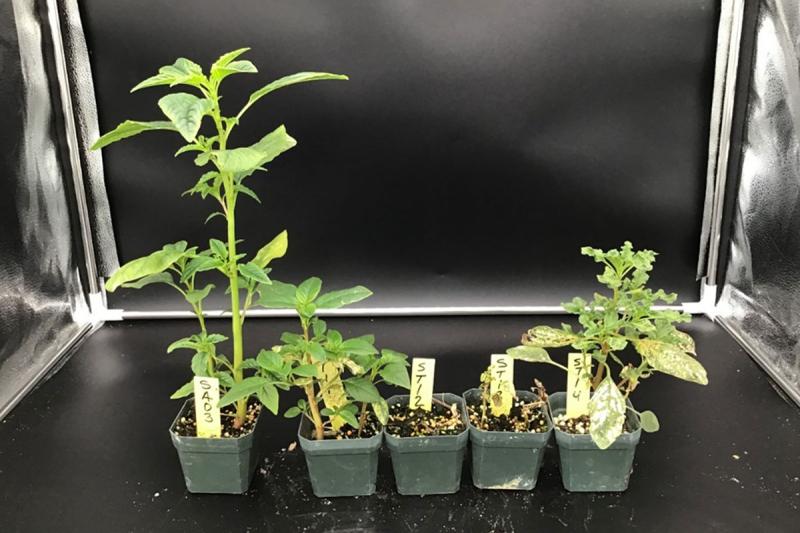
Waterhemp resistant to the PPO-inhibiting herbicides has not officially been confirmed in South Dakota but confirmed resistant populations can be found in Iowa, Nebraska, and Minnesota. Resistant plants will appear burnt but new growth will emerge from growing points that were not desiccated from the herbicide application (Figure 3).
While there is PPO-inhibiting, herbicide-resistant kochia to the herbicide saflufencial (Sharpen) in South Dakota, there is not cross resistance to the herbicides commonly applied postemergence in soybean.
Large plants (greater than 4” in height) that were not effectively managed after the application of PPO-inhibiting herbicides may not be resistant but survived due to inadequate coverage. If smaller plants (2 to 4” in height) survive, these plants may be resistant. Consult South Dakota State University to determine if these plants should be sampled for resistance screening.
References
- Arsenijevic N, Bernards ML, DeWerff RP, Arneson NJ, Smith DH, Werle R (2025) Influence of glufosinate mixtures on waterhemp control and soybean canopy and yield. Weed Technol 39(e66):1–10
- Belfry KD, Shropshire C, Sikkema PH (2016) Identity-preserved soybean tolerance to protoporphyrinogen oxidase-inhibiting herbicides. Weed Technol 30:137–147
- Priess GL, Norsworthy JK, Roberts TL, Gbur EE Jr. (2020) Impact of postemergence herbicides on soybean injury and canopy formation. Weed Technol 34:727–734
